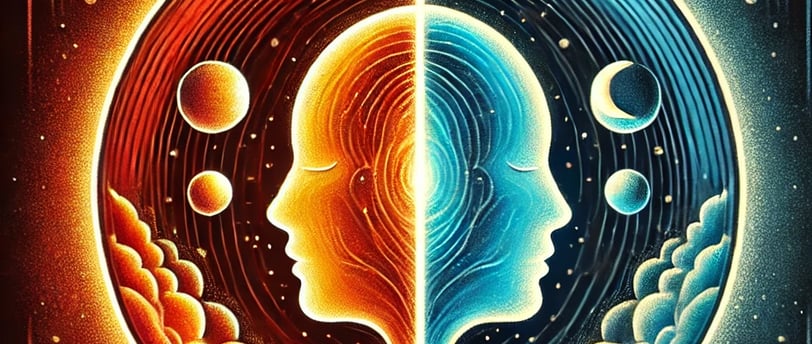Understanding human dynamics: a key asset in choosing the right seminar speaker
Learn how human dynamics, from the core to the edge, influence team interactions. Key concepts such as exogenous framework, psychological safety and roles in a group, to better choose a counsellor who can help you understand the dynamics
DYNAMIQUE DE GROUPEMANAGEMENTCOMMUNICATION
Lydie GOYENETCHE
7/20/20243 min read


Managing at the heart of collective dynamics: an anthropological reading
Management, far from being a simple organizational mechanism, is a mirror of human dynamics.
Within a team, each individual carries with him or her a story, expectations, and an identity that influence his or her interactions with the collective. The team then becomes a microcosm of society, where roles, tensions, and alliances similar to those observed in families, tribes, or other forms of human communities are replayed.
From this perspective, understanding collective and intrapersonal dynamics does not only mean observing visible behaviors. It is also an invitation to explore the invisible structures that shape these behaviors: the values, beliefs, and emotions that form the core of each individual. But how can a manager interpret these dynamics? And how does this interpretation influence its action? Let's dive into this reflection together.
The team: an anthropological structure
In a team, as in any human community, relationships revolve around roles and functions. These roles are not always explicitly assigned; They often emerge informally, depending on the internal dynamics of the group.
Like what:
The natural leader, often the one that others turn to in a crisis situation.
The mediator, who seeks to calm conflicts and maintain balance.
The opponent, who, consciously or not, highlights dysfunctions.
These roles are reminiscent of those found in family structures: the protective parent, the rebellious child, or the conciliatory elder. For a manager, perceiving these dynamics allows them to better understand the interactions and adjust their approach accordingly.
Case in point: Google and psychological safety
Google, through its "Aristotle" project, has demonstrated that the most successful teams are not necessarily those with the best individual talent, but those where members feel safe to express themselves freely. This climate of trust is based on a detailed understanding of the roles that each person plays in the group, and on the manager's ability to balance them.
Managerial interpretation: reading the dynamics of the group
The manager, by virtue of his position, is a privileged observer of team dynamics. But his interpretation is often influenced by his own patterns, derived from his personal history and his vision of the world. Two elements are therefore essential:
1. Decode the core and edge of the workforce
Each member of a team has a central core, i.e. their core values and intrinsic motivations, as well as a periphery, which corresponds to their visible behaviors in a given context.
Case in point: Airbnb and the culture of autonomy Airbnb has built a corporate culture where managers are trained to detect employees' deep motivations. For example, an employee who values autonomy will be entrusted with projects with great latitude, thus promoting his creativity while respecting his central core.
2. Take a step back from your own projections
The manager is not a neutral entity. His reading of dynamics is tinged with his own affective patterns and past experiences. Like what:
A manager who grew up in a structured and authoritarian environment may favor strict rules, interpreting any divergence as a lack of respect.
Another, having evolved in a more collaborative framework, will spontaneously seek to integrate all voices, sometimes at the risk of diluting his authority.
The key lies in awareness: understanding your own filters to better observe the real dynamics of the group.
The team as a microcosm: implications for management
The team, as a system, reflects human otherness. Each individual is a complex entity, with its strengths, vulnerabilities, and aspirations. By reading these dynamics through an anthropological perspective, the manager can:
Create an exogenous framework: A neutral space where individual values can coexist with collective goals.
Business case: Netflix and radical transparency Netflix applies an open communication policy, where each employee can express his or her ideas, even critical ones, in a structured framework. This framework helps channel tensions and encourage co-creation.
Recognize tensions as opportunities: Rather than avoiding conflict, use them as levers to clarify expectations and strengthen bonds.
Promote co-creation: Encourage team members to build solutions together, while respecting each other's uniqueness.
Case study: Pixar and the "Braintrust" sessions At Pixar, the "Braintrust" sessions are designed to allow all team members to give honest feedback on current projects. These constructive exchanges make it possible to strengthen links and produce more collaborative works.
Conclusion: between introspection and action
Being a manager means accepting to be both an actor and an observer of collective dynamics. By taking an anthropological approach, we don't just manage tasks or achieve goals. We are embarking on a human adventure, where each interaction is an opportunity to better understand the other and to build a more harmonious collective.
Whether you are a coach, a manager or an HR person, this reading of team dynamics can inspire you to rethink your practices, by integrating more people and otherness into your strategies. So, are you ready to read between the lines and navigate the complex but exciting waters of human relationships? 🌊


EUSKAL CONSEIL
9 rue Iguzki alde
64310 ST PEE SUR NIVELLE
FRANCE
0033782505766
euskalconseil@gmail.com

